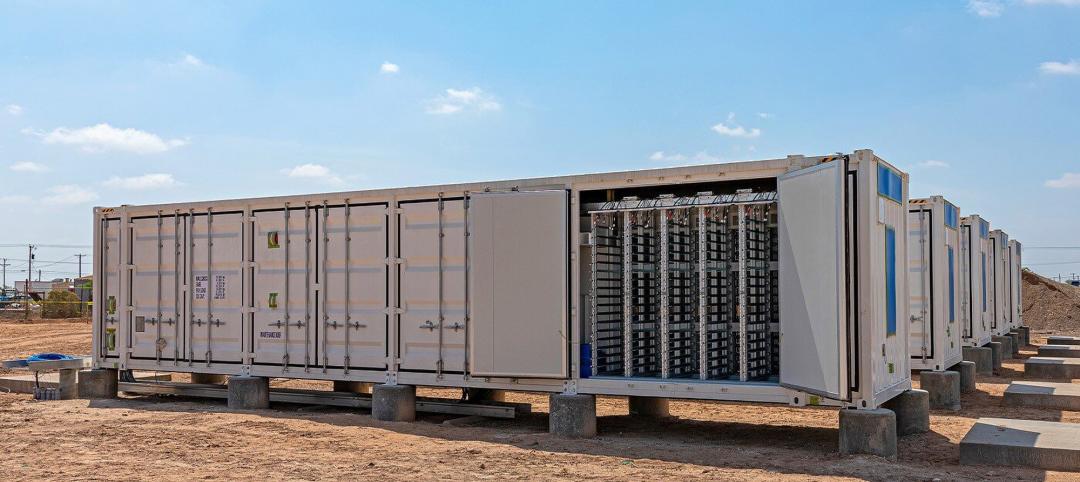More than one in seven banks now uses blockchain technology. American Express and Mastercard filed several patents last year related to the technology and B2B transactions, according to pymnts.com. And by 2022, global spending on blockchain technology by all sectors could hit $11.7 billion, from an estimated $1.5 billion in 2018, according to International Data Corp. (bit.ly/2uOq9qO).
While AEC firms are still trying to figure out where it fits into design and construction management, blockchain technology has grabbed hold of the financial services sector. IDC notes that the distribution and services sector is also latching onto this technology in a bigger way. And the New York Times reported last October that the concept of marrying blockchain to artificial intelligence is attracting entrepreneurs and investors.
For the uninitiated, the simplest explanation of this technology is that blockchain is a digital distributed ledger of transactions or records that exists across multiple participants and computers in a peer-to-peer network. Transactions can be added to the blockchain using a secure digital “signature.” In essence, it eliminates middlemen, and democratizes recordkeeping that is secured by “witnesses” who are incentivized by the blockchain’s digital currency.
Blockchain “is a clumsy little dance that a computer needs to do in order to simulate something that humans have been doing for thousands of years,” quips Dan Robles, CEO of the Integrated Engineering Blockchain Consortium, which has developed a working blockchain that prices infrastructure risk by monetizing data provided and validated by engineers.
Bitcoin is the best-known cryptocurrency that uses this technology for transactional purposes. And over the past decade, innovations from this technology have evolved from cryptocurrency exchanges and blockchain to smart contracts enforced by computer code and what’s known as “proof of stake,” which does away with data processing centers and replaces them with complex financial instruments for a higher level of security. This, according to Vinay Gupta, Founder of Hexayurt Capital, which was instrumental in creating Dubai’s Blockchain Strategy to issue all government documents on blockchain by 2020.
What users like about blockchain is its immutability—once data is recorded (and usually time stamped) on a block, it can’t be changed retroactively without the entire network’s collusion. Tampering with the integrity of the blockchain voids it, and transactions are no longer valid.
“Trust delivered by way of cryptography” is how Ian Church, Senior Projects Director for CBRE Global Workplace Solutions, describes blockchain. He believes the technology could eventually deliver “highly efficient investment valuations” that lead to incremental gains in property values.
In a 2017 paper by Arup Foresight based on a workshop with Deloitte, PwC, Volkswagon Financial Services, and the Ellen MacArthur Foundation, the engineering firm predicted that blockchain would have “a major impact on the built environment … in the same way the World Wide Web did.”
The paper didn’t stop there. Blockchain, Arup stated, could have a “profound effect on society” because it provides a platform where people, organizations, and even machines can transact “without having to trust each other.”
Related Stories
Building Enclosure Systems | Oct 30, 2024
Winners of Building Envelope Innovation Prize focus on secondary glazing
The U.S. Department of Energy (DOE) recently announced the winners of the first phase of the Building Envelope Innovation Prize. The prize targets high-performance, cost-effective secondary glazing systems to improve efficiency of commercial windows.
M/E/P Systems | Oct 30, 2024
After residential success, DOE will test heat pumps for cold climates in commercial sector
All eight manufacturers in the U.S. Department of Energy’s Residential Cold Climate Heat Pump Challenge completed rigorous product field testing to demonstrate energy efficiency and improved performance in cold weather.
Engineers | Oct 23, 2024
Navigating battery energy storage augmentation
By implementing an augmentation plan upfront, owners can minimize potential delays and unforeseen costs when augmentation needs to occur, according to Burns & McDonnell energy storage technology manager Joshua Crawford.
3D Printing | Oct 9, 2024
3D-printed construction milestones take shape in Tennessee and Texas
Two notable 3D-printed projects mark milestones in the new construction technique of “printing” structures with specialized concrete. In Athens, Tennessee, Walmart hired Alquist 3D to build a 20-foot-high store expansion, one of the largest freestanding 3D-printed commercial concrete structures in the U.S. In Marfa, Texas, the world’s first 3D-printed hotel is under construction at an existing hotel and campground site.
Brick and Masonry | Oct 7, 2024
A journey through masonry reclad litigation
This blog post by Walter P Moore's Mallory Buckley, RRO, PE, BECxP + CxA+BE, and Bob Hancock, MBA, JD, of Munsch Hardt Kopf & Harr PC, explains the importance of documentation, correspondence between parties, and supporting the claims for a Plaintiff-party, while facilitating continuous use of the facility, on construction litigation projects.
AEC Tech | Sep 25, 2024
Construction industry report shows increased use of robotics on jobsites
Nearly two-thirds of contractors surveyed, who cited use of robotics on jobsites, are either using monitoring and/or service/labor robotics.
3D Printing | Sep 17, 2024
Alquist 3D and Walmart complete one of the nation’s largest free-standing, 3D-printed commercial structures
Walmart has completed one of the largest free-standing, 3D-printed commercial structures in the US. Alquist 3D printed the almost 8,000-sf, 20-foot-high addition to a Walmart store in Athens, Tenn. The expansion, which will be used for online pickup and delivery, is the first time Walmart has applied 3D printing technology at this scale.
Building Technology | Aug 23, 2024
Top-down construction: Streamlining the building process | BD+C
Learn why top-down construction is becoming popular again for urban projects and how it can benefit your construction process in this comprehensive blog.
Curtain Wall | Aug 15, 2024
7 steps to investigating curtain wall leaks
It is common for significant curtain wall leakage to involve multiple variables. Therefore, a comprehensive multi-faceted investigation is required to determine the origin of leakage, according to building enclosure consultants Richard Aeck and John A. Rudisill with Rimkus.

















